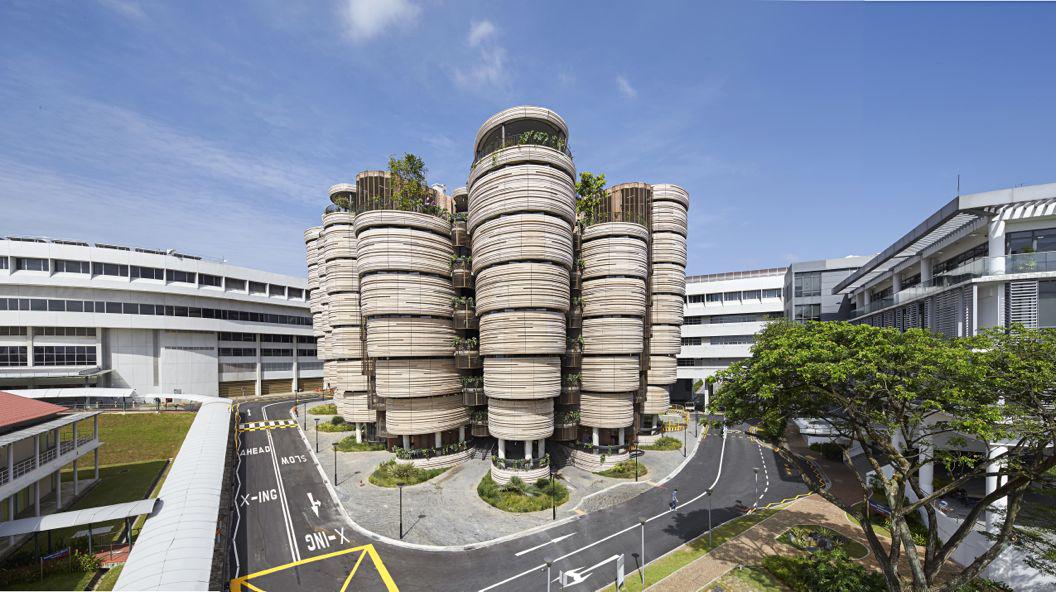Thomas Heatherwick is the London-based architect whose Heatherwick Studio has produced the 2012 London Olympics’ hammered copper cauldron, a futuristic version of London’s double-decker bus, plans for a Garden Bridge that would provide a grace note of urban flora for pedestrians crossing the Thames, and the new Googleplex in Silicon Valley.
Heatherwick Studio’s first major new building in Asia, the Learning Hub, which opened Tuesday at Nanyang Technological University in Singapore, is an answer to the question of how to build a 21st-century learning institution in an era when you can get higher education via smartphone and the college library is now accessible from virtually anywhere.
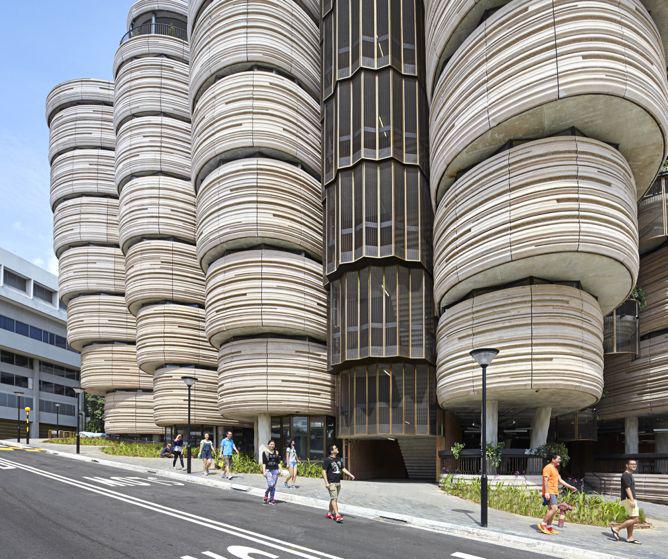
Courtesy of Hufton and Crow
In a project description, the architects note that the rise of the Internet and low-cost computing have prompted a shift in contemporary learning methods and how students approach educational facilities. “University buildings have ceased to be the only site where students are able to source educational texts, and have become unappealing spaces with endless corridors, no natural daylight and only hints of other people’s presence,” they say.
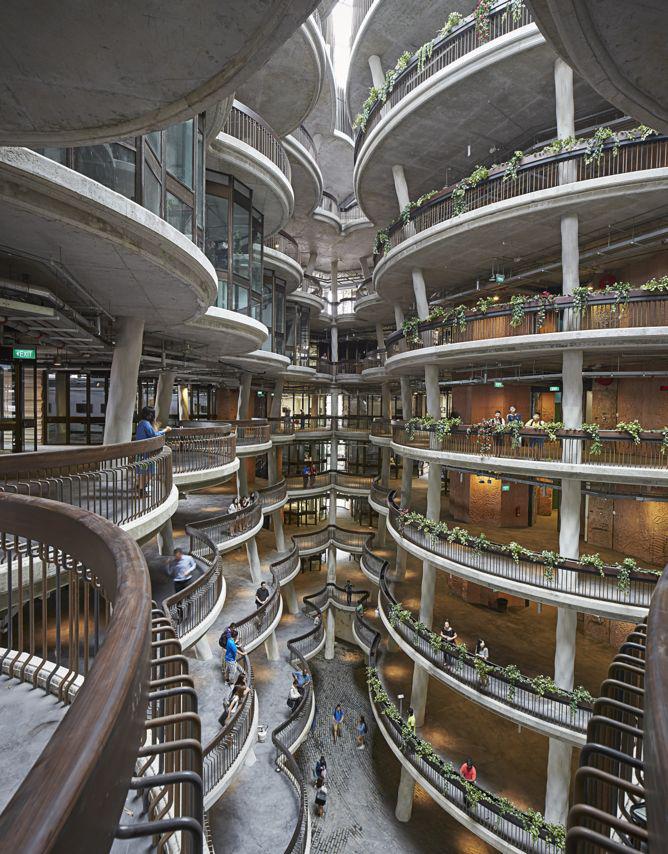
Courtesy of Hufton and Crow
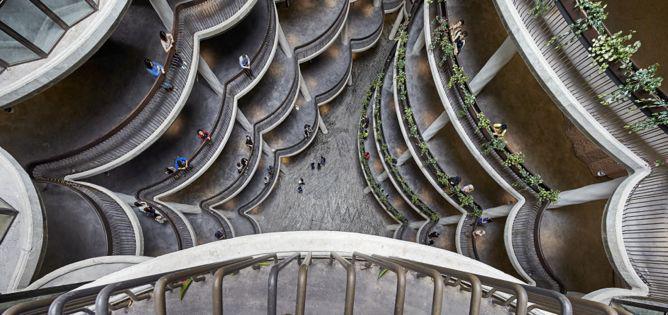
Courtesy of Hufton and Crow
Heatherwick and his team decided to break down the notion of a hierarchical classroom setting by creating an environment to encourage students and professors to mix and collaborate. Eschewing traditional features like florescent-lit hallways and forward-facing lecture halls, they created clusters of cornerless rooms outfitted with communal tables and linked them to a central area complete with gardens and multiple entrances. The goal was to create a space that promotes accessibility, serendipity, and connectivity on a human scale.
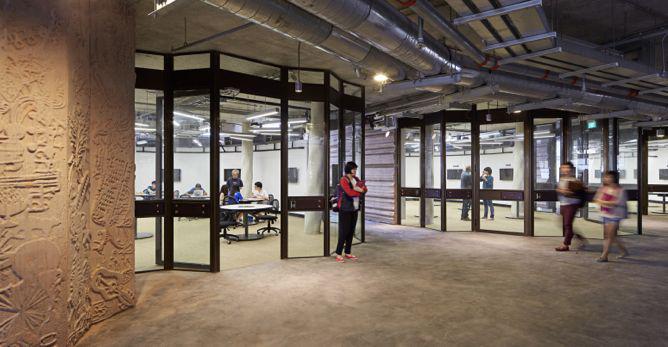
Courtesy of Hufton and Crow
“With the digital revolution allowing learning to take place almost anywhere, the most important function of this new university building was to be a place where students and professors from various disciplines could meet and interact with one another,” a press release states.
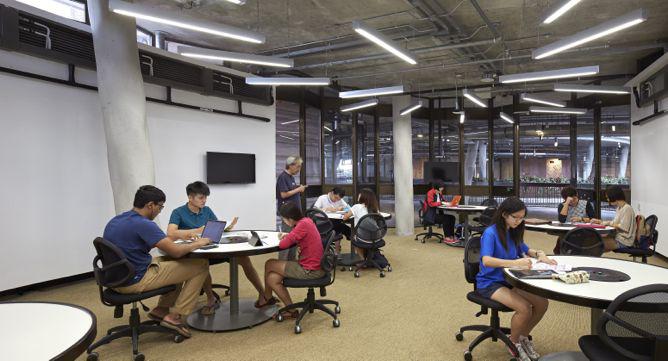
Courtesy of Hufton and Crow
The eight-story concrete building is comprised of 12 towers that frame a public central atrium. The towers’ 56 “tutorial rooms” don’t have corners or obvious fronts or backs and provide students with open spaces and terraces for collaboration and breaks.
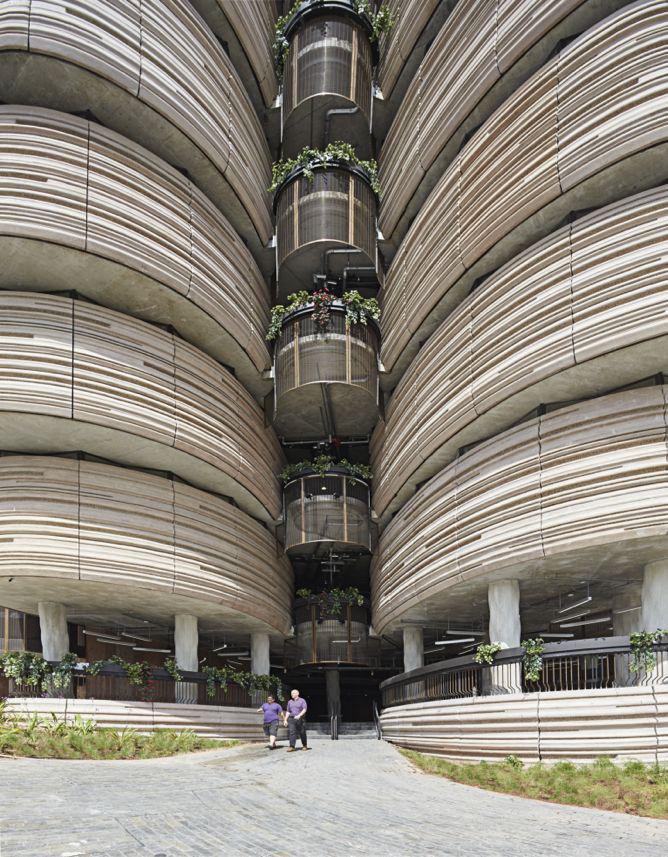
Courtesy of Hufton and Crow

Courtesy of Hufton and Crow
The architects said that their primary design challenge was how to make a “humble” material like concrete “feel beautiful.” They cast the concrete stair and elevator cores with 700 specially commissioned 3-D drawings from British artist Sara Fanelli that reference science, art, and literature. Angled concrete columns create a “distinctive undulating texture”; the curved façade panels are cast with a horizontal pattern made using silicone molds to create a 3-D effect. “The result of the building’s various raw treatments of concrete is that the whole project appears to have been handmade from wet clay,” they say.
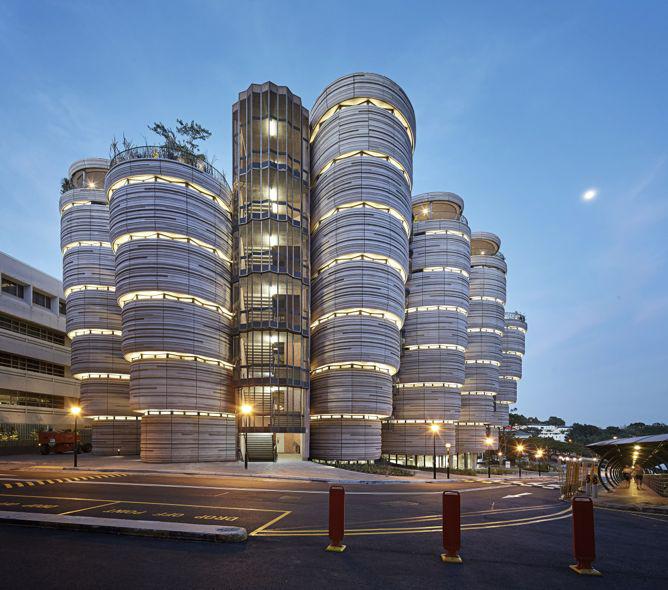
Courtesy of Hufton and Crow
Architects, however, rarely have control when it comes to nicknaming buildings. Wallpaper reports that students have already christened it “dim sum,” since it apparently resembles stacked dim sum steamer baskets. Dezeen says its sculptural towers look like “giant parsnips” (reversing its position in 2013 when the project was announced that it looked like “a cluster of elongated bee hives”).
